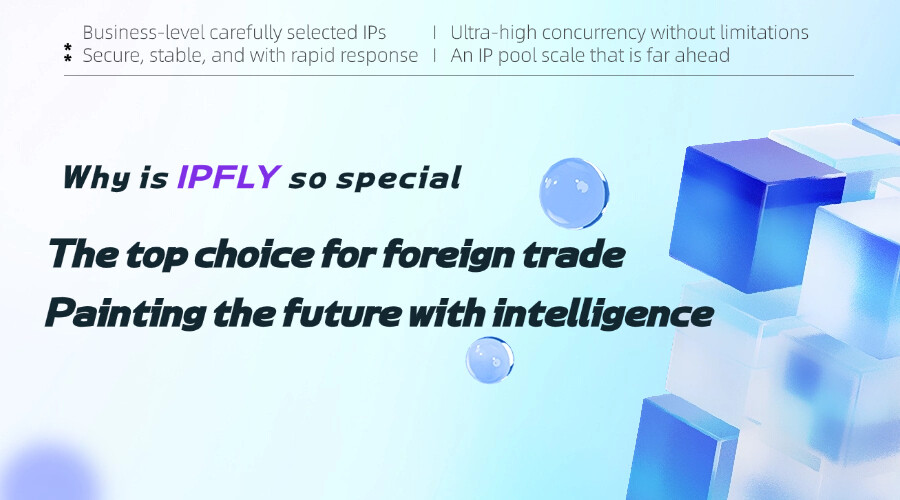In the age of digitalization, network activities have become a central part of daily life and business operations. Whether it’s a cross-border e-commerce business accessing overseas platforms or an enterprise performing data acquisition and market analysis, Proxy IP plays an important role as an underlying technology.
Proxy IP definition and core principles
Proxy IP, a technology that forwards network requests through an intermediary server (proxy server). When a user visits a target Web site, the request is first sent to a proxy server, which then forwards the request to the target Web site. The IP address received by the target website is the address of the proxy server, not the user’s real IP.
The core principle can be simplified as follows:
User Device → Proxy Server → Target Site
Target Site Response → Proxy Server → User Device
This “transit” mechanism not only hides the user’s real IP, but also breaks through geographical restrictions and improves network security.
The main types of proxy IPs and their application scenarios.
Proxy IPs can be categorized into the following types based on protocol type and anonymity differences:
| Type | Features | Typical Application Scenarios |
| HTTP/HTTPS Proxy | Supports web browsing, HTTPS proxy with additional SSL encrypted transmission. | Anonymous website access, cross-border e-commerce login account |
| SOCKS Agent | Supports full protocols (e.g. FTP, SMTP) for non-web data transfer. | Video Streaming Unlock, File Transfer |
| Transparent Agent | Does not hide user IP, mainly used for cache acceleration | Intra-enterprise network management, public Wi-Fi optimization |
| Highly anonymous agents | Completely hide user’s IP and proxy identity, the target website can not be recognized. | Data Acquisition, Advertising Validation |
Proxy IP practical application case study
Cross-border e-commerce platforms need to access overseas websites (e.g. Amazon, Shopify), but direct access may be restricted due to IP attributes. By using static residential proxy IPs, we can compare the real network environment of users in the target market, stabilize account login and store management, and avoid the risk control mechanism triggered by IP anomalies. Example: A cross-border e-commerce team used static IPs to access Amazon in the U.S. over a long period of time, successfully maintaining account stability and increasing order processing efficiency by 30%.
Data Acquisition and SEO Optimization
Search engines (e.g. Google) impose anti-crawl restrictions on the same IP for high-frequency visits. Adopting dynamic residential proxy IP rotation strategy can bypass IP blocking and continuously crawl public data. For example, a market analytics company collects price data from 50 e-commerce platforms around the world through a dynamic IP pool, completing 100,000 requests per day with a success rate of over 99%.
Internet Security and Privacy
In the public Wi-Fi environment, the user’s real IP may be exposed to the risk of network attacks. Proxy IP transit can effectively isolate the intranet and extranet, reducing the probability of data leakage.
IV. Proxy IP configuration and usage guidelines
Key indicators for selection IP resource size: number of countries covered, frequency of IP pool update (on-demand rotation is required for dynamic IPs); protocol compatibility: whether HTTP/HTTPS/Socks5 and other protocols are supported; stability and speed: 99.9% availability, milliseconds response as a benchmark. For example, IPFLY can fulfill the above requirements.
Common Configuration Methods Windows system: through the console → network settings → manually enter the proxy IP address and ports; programmatic access (such as Python crawlers): use the API interface to dynamically call the IP pool.
V. Frequently Asked Questions and Points for Attention
Is Proxy IP legal? Proxy IP itself is a neutral technology, and compliance depends on the context in which it is used.
How to avoid IP blocking? Dynamic IP: set a reasonable request frequency (e.g. 1-2 times per second); Static IP: choose a high anonymity service to avoid triggering the anti-crawling rules of the target website.
What are the risks of free proxy IP? Free proxies may have problems such as IP duplication, slow speed, data theft, etc. It is recommended to choose an enterprise-level service to protect your security, such as IPFLY proxy service.
Proxy IP, as the cornerstone of network technology, is both a shield for privacy protection and a gas pedal for business efficiency. Whether it’s an individual user breaking through geographical restrictions or an enterprise-level large-scale data application, the reasonable choice of proxy IP type and its standardized use will become the key ability to compete in the digital world.


